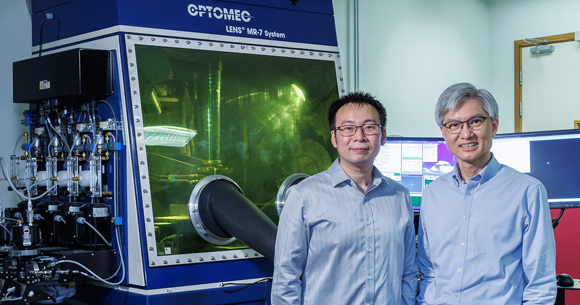In a new research study published in Nature, engineers from the Hong Kong Polytechnic University (PolyU), along with RMIT University and the University of Sydney, have successfully used Additive Manufacturing to create a new titanium alloy (α–β Ti-O-Fe). This new alloy incorporates oxygen and iron, making it strong, ductile, and sustainable, with potential applications in aerospace, marine engineering, consumer electronics, and biomedical devices.
The researchers employed Directed Energy Deposition (DED) in the AM process, enabling the fabrication of large-scale near-net-shape components with consistent microstructure. The new titanium alloy demonstrated superior mechanical performance, higher strength, and comparable ductility to the widely used Ti-6AI-4V benchmark material formulated in 1954.

Researcher Dr. Zibin Chen emphasized the potential environmental benefits, as their work facilitates recycling over 10% of waste generated by the metal alloy production industry, contributing to lower material and energy costs.
Unlike traditional manufacturing methods, AM overcomes limitations and enhances the alloy’s properties. It also provides a sustainable solution by enabling the recycling of off-grade sponge titanium generated during the Kroll process, reducing waste and production costs.
“This work can serve as a model or benchmark for other metal alloys that use 3D printing to enhance their properties and expand their applicability,” said Professor Keith KC Chan, a researcher on the project.
“Metal 3D printing is an emerging field, and it will take time before it is widely adopted in materials manufacturing.”
It certainly is, but material scientists will be pleased to know that AM is playing a large role in reducing the cost, time and material wastage typically associated with new alloy development, as proven by the new alloy developed by PolyU and collaborators.
Come and let us know your thoughts on our Facebook, Twitter, and LinkedIn pages, and don’t forget to sign up for our weekly additive manufacturing newsletter to get all the latest stories delivered right to your inbox.









